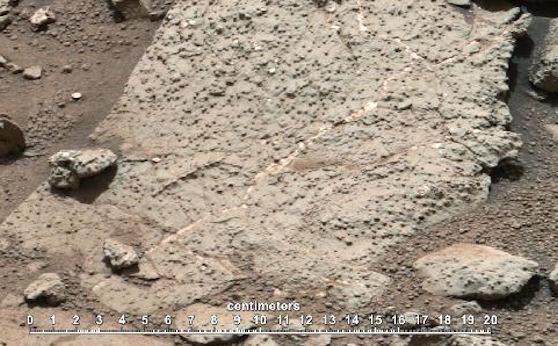An analysis of a rock sample recently collected by NASA’s Curiosity rover shows ancient Mars could have supported living microbes.
Last month, Curiosity drilled into a sedimentary rock near an ancient stream bed in Gale Crater. In the powder from the drill sample, scientists have identified sulphur, nitrogen, hydrogen, oxygen, phosphorus and carbon — some of the key chemical ingredients for life.
These clay minerals are a product of the reaction of relatively fresh water with igneous minerals, such as olivine, also present in the sediment. The reaction could have taken place within the sedimentary deposit, during transport of the sediment, or in the source region of the sediment. The presence of calcium sulphate along with the clay suggests the soil is neutral or mildly alkaline.
Scientists plan to work with Curiosity in the “Yellowknife Bay” area for many more weeks before beginning a long drive to Gale Crater’s central mound, Mount Sharp. Investigating the stack of layers exposed on Mount Sharp, where clay minerals and sulphate minerals have been identified from orbit, may add information about the duration and diversity of habitable conditions.

